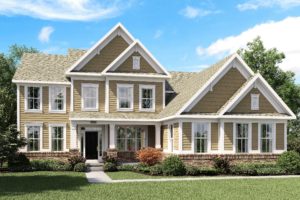
Hackettstown, N.J.—The remodeling industry is largely recovering from its Q1 COVID-19-induced dip, according to the National Kitchen & Bath Association’s (NKBA) recently released Market Outlook report.
According to the report, the percentage of homeowners actively working on remodeling projects increased significantly, from 19% in Q1 to 36% in Q2. Additionally, more than one in five households (22%) wants to remodel soon and many increasingly cite the need for more functional space as a driving factor. A significant percentage is also motivated to replace worn-out features (20%), repair damage (15%) and update their home’s design (14%).
“We continue to be extremely encouraged by the vigorous interest in home improvement and functional living, which has certainly contributed to the healthy industry rebound we’re seeing,” said Bill Darcy, CEO, NKBA. “Even as restrictions lift in parts of the country, people continue to spend far more time at home than they did pre-COVID-19. Consumers are, understandably, still careful about spending, but as the economy continues to reopen and improve, we expect smaller DIY projects will lead to more significant renovations, boosting both industry revenue and homeowner satisfaction with their living spaces.”
The study also included a survey of homeowners in various stages of considering or executing a kitchen or bath renovation project, and the following insights shed light on how COVID-19 has changed the way people interact with their living spaces:
- 92% of households are making at least limited lifestyle changes in light of COVID-19, with over half (58%) saying they have made major changes.
- People are cooking and eating more at home (55%), disinfecting spaces more frequently (46%), spending more time in the kitchen (45%) and buying and storing more in bulk (30%).
- More than one in 10 (13%) use the kitchen for either remote work or schooling.
- Nearly half (46%) of households had an adult working from home during the COVID-19 shutdowns and 53% of those are still working from home full-time.=
According to the report, DIY remains a notable trend:
- More than one in three jobs completed in Q2 were DIY projects, a 40% increase from Q1.
- Health and money concerns are, unsurprisingly, playing a role. By doing projects themselves, homeowners can socially distance as well as save money in a financially uncertain time.
- Some homeowners are turning to DIY because there is a short supply of pro remodelers in many geographic markets. Additionally, many are reluctant to have strangers in their homes.
Due to a combination of smaller DIY jobs and cautious spending, low-cost projects will decline only 1% from last year, while mid- and high-spend will drop 10.1% and 5.2%, respectively, according to the report.
Nearly one-quarter (24%) of households planning projects in 2020 cited limited finances as an impact of COVID-19. And while 55% of those who canceled projects did so due to the pandemic directly, 34% did so because project costs were outside their budget, up from 27% of households in the prior quarter.
Despite setbacks from the COVID-19 pandemic, spending in 2020 is anticipated to hit $139.1 billion, down only 6.1% from 2019 and up from the expected decline of 11.7% predicted last quarter, according to the report.
Additional economic indicators that may contribute to increased remodeling activity include:
- Home purchase applications rebounded to pre-COVID-19 levels in June and July, perhaps in part a result of city-dwellers purchasing and families sizing up as they anticipate more time at home ahead.
- July saw a 33% YOY increase in new home starts. Kitchen and bath installs typically lag starts by 2-3 months, suggesting a needed demand for those products in the coming quarter.
- Real income growth is known to drive increased spending on remodeling projects across budgets, and July saw a 6.6% YOY increase.
- In Q2, remodeling activity increased markedly in younger homes under 20 years old. This tracks with NKBA data that finds kitchens and bath designs become outdated after 15 years, meaning homes built during the mid-2000s housing boom are now due for remodels, perhaps indicating a future renovation wave for that era of homes.
Methodology
The data presented in the NKBA’s report is compiled from a variety of sources: The U.S. Census American Housing Survey home-improvement projects micro-data, National Apartment Association (NAA) spending (rental) and John Burns Real Estate Consulting’s home improvement estimates and forecasts of single-family rental renovation spending. In addition, a survey was conducted among 1,048 consumers inquiring about their household kitchen or bathroom remodeling projects.
